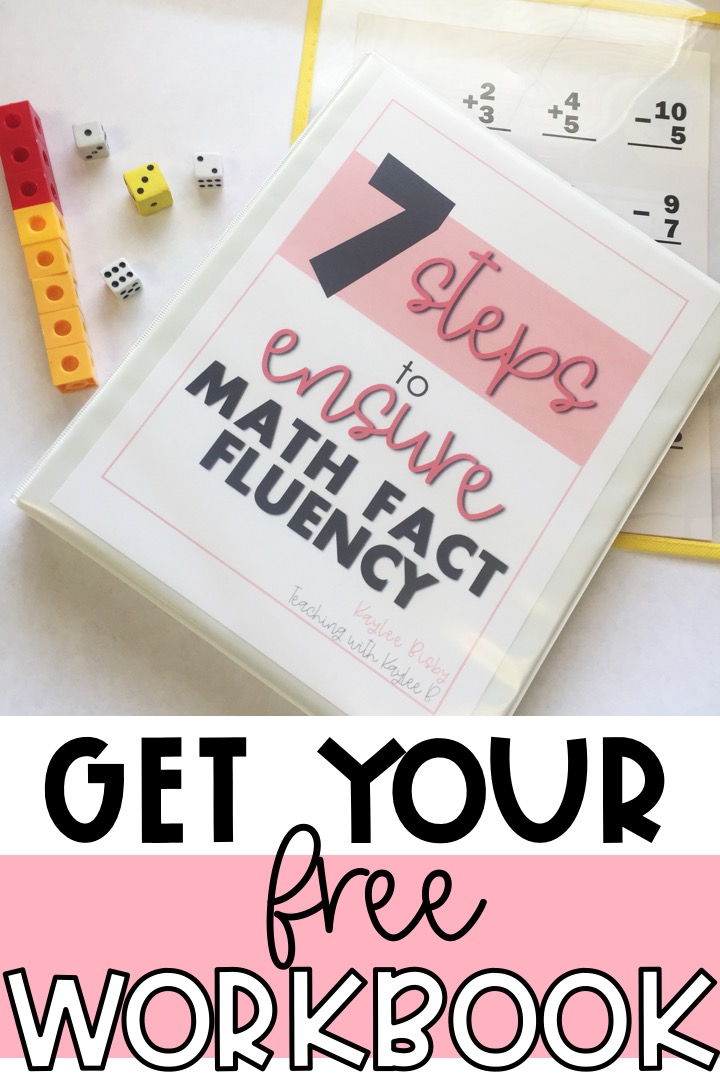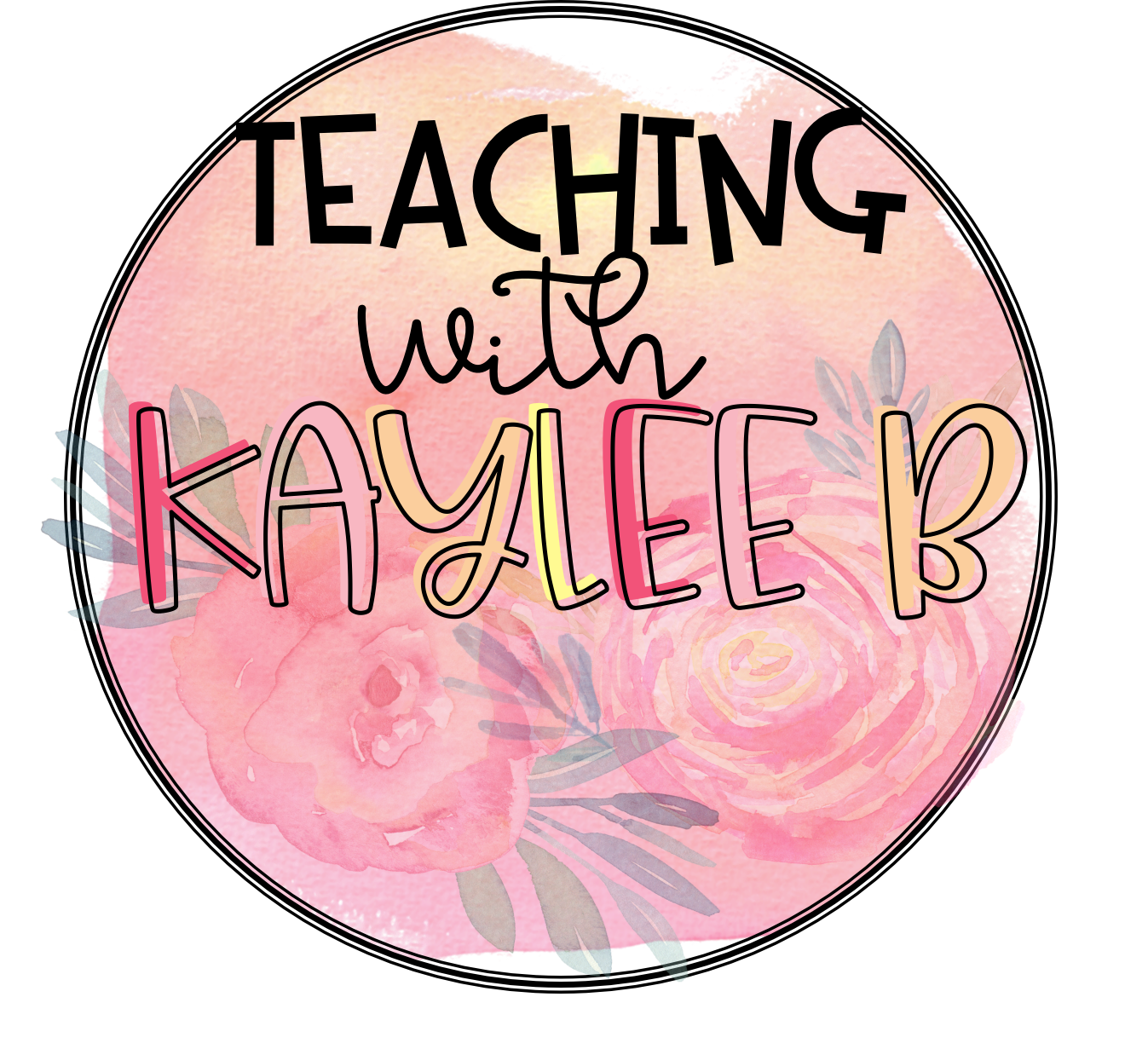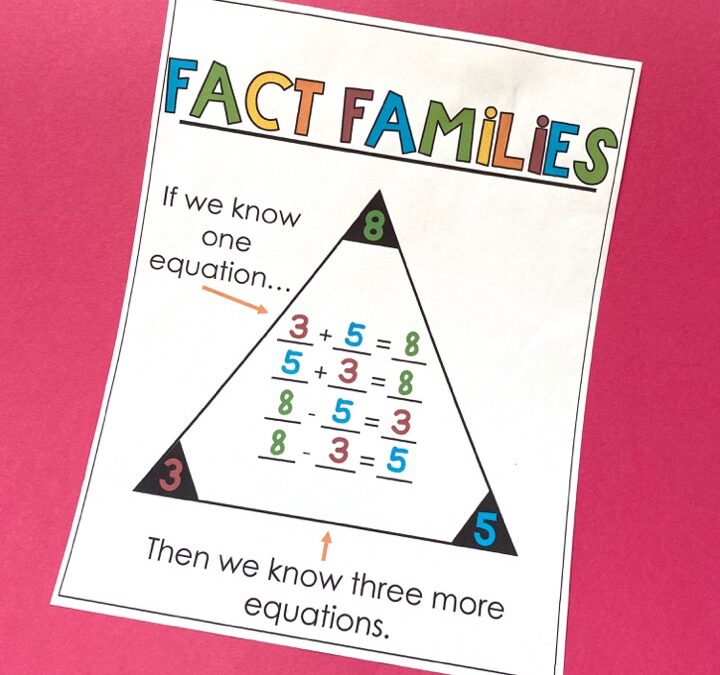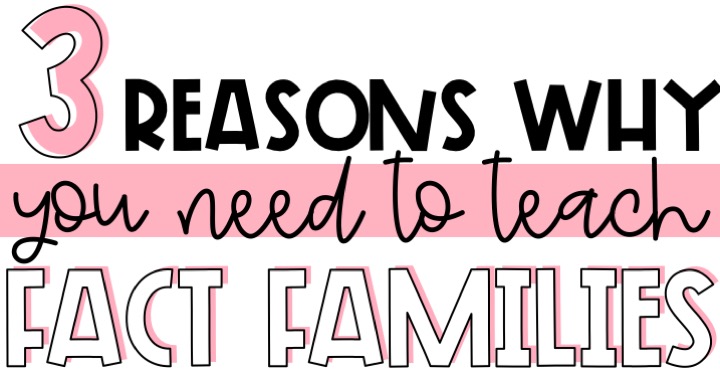Fact Families
I have my students work with fact families in our classroom frequently. They are a good foundation for students understanding the operations of addition and subtraction.
So let’s go over what are fact families, why you need to be teaching them, and fact family math activities that help students understand them.
But before we get started, did you know I have a free guide for first and second grade teachers?
I’m sharing my best tips and strategies when it comes to getting your students to math fact fluency. Download the free workbook here: The 7 Steps to Ensure Math Fact Fluency
What Are Fact Families
Fact families are related facts. A fact family has two addition facts and two subtraction facts.
They are cumulative pairs and their inverses. Let me give you an example.
5+2=7
2+5=7
7-2=5
7-5=2
Reasons Why You Need to be Teaching Fact Families
Now the real question is why is it so important to teach fact families to 1st and 2nd grade students. For me, there are three big reasons.
It helps students when you move to subtraction
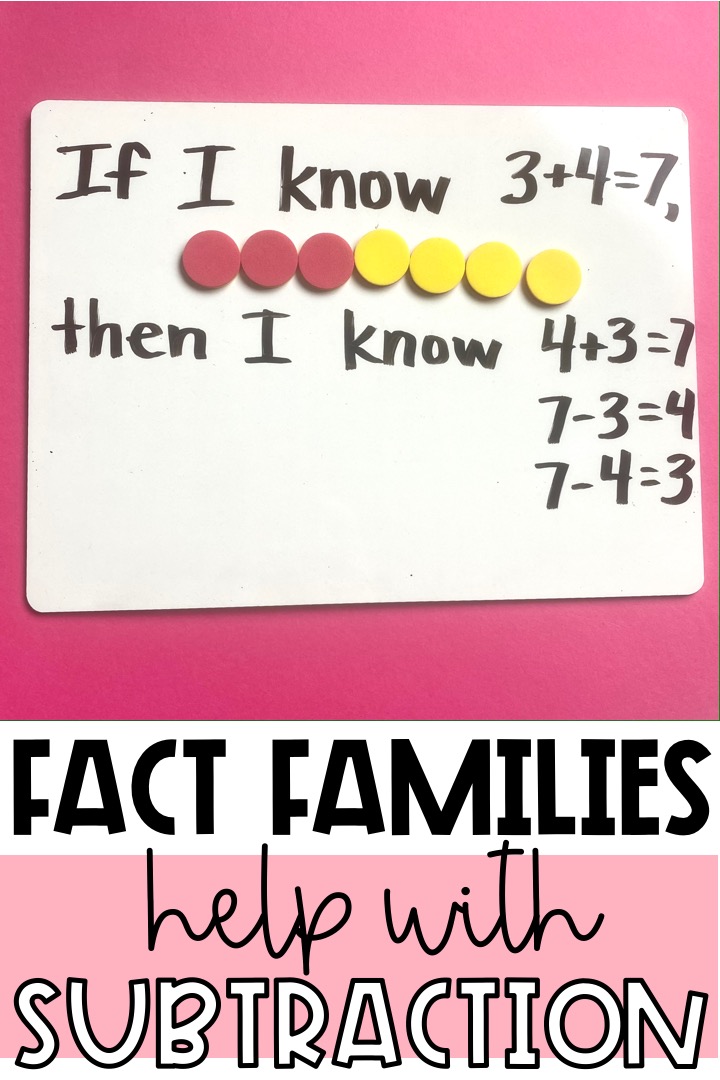
Fact Families can set a good foundation in subtraction for students.
We all know that subtraction is trickier for students than addition. So fact families help students when they move on to subtraction. If they know that 3+4=7, then they can know if they start at 7 and subtract 3, they will have 4.
Now it does take some practice for students to catch onto this, but that is why I’m also sharing fact families math activities you can do with your students here in this blog post.
They Help Students with Fact Fluency
The thing I like to show students is that if they know one equation, they can automatically know 3 more. I especially like to do this with doubles subtraction facts.
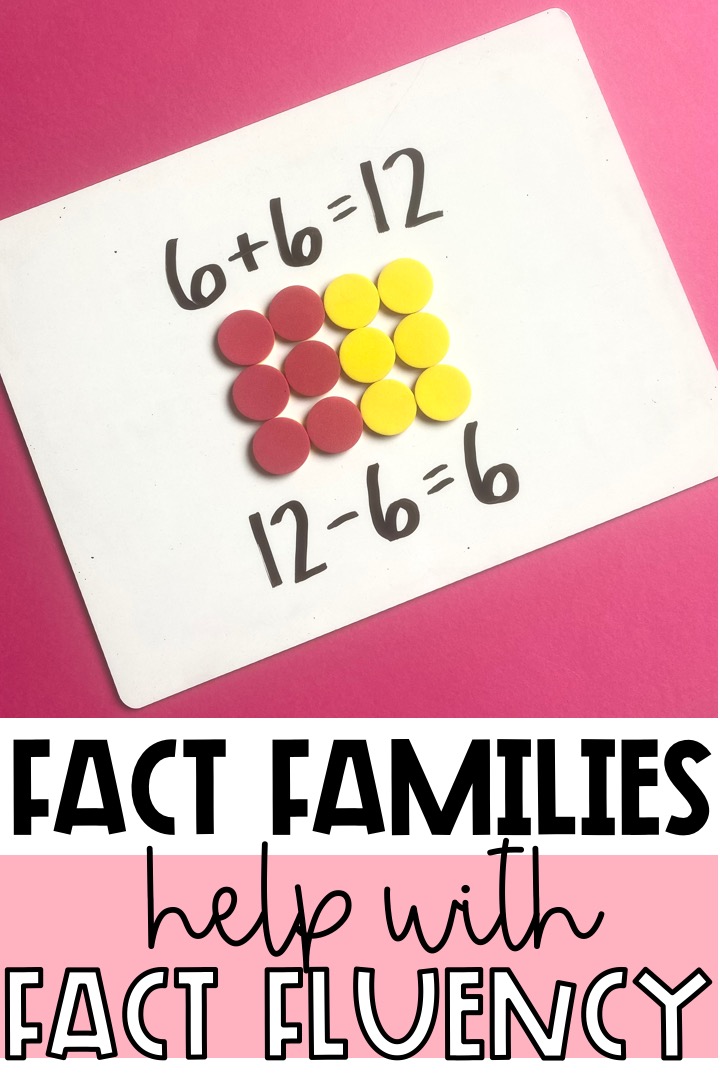
As students understand the patterns with fact families, they increase their fact fluency.
I do this because students know 6+6=12. But when they see 12-6, it’s a little trickier. So I prompt my students by saying “I know 6+6=12, so 12-6 equals what?
As students see that they can use known facts to find unknown facts quickly, they will increase in their fact fluency.
For more ideas on how to help struggling students with fact fluency read this blog post: Fact Fluency – 5 Ways to Help Struggling Students.
It helps with higher level math
Using fact families can also help students with higher level math. I have seen this when we work on number lines for 2-digit and 3-digit addition and subtraction.
At first I teach my students that we can count back to find the answer to the subtraction equation.
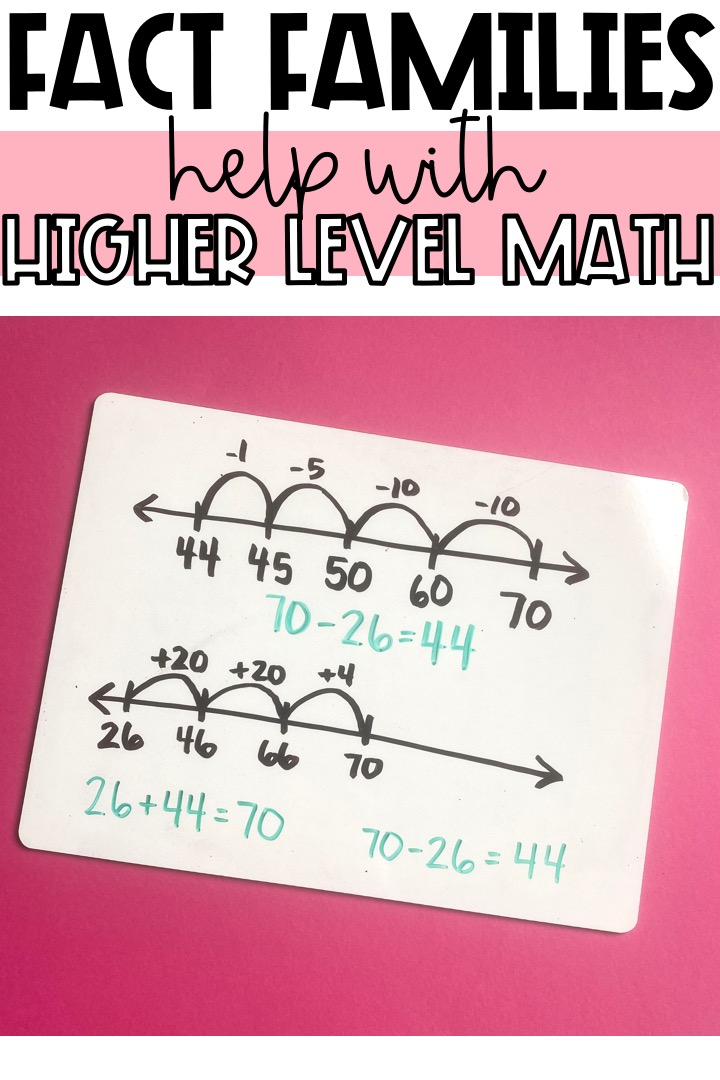
Fact families help students gain a deeper understanding of higher level math.
Then I teach the students that we can count on to subtract. And at first, they are really confused. But then I give them an example of it as a fact family, and it makes sense to them. I’ll show them something like this:
70-26=44
70-44=26
44+26=70
26+44=70
Fact Families Math Activities
Now that we know why it is so important to teach students fact families, let’s go over some activities you can do in your classroom to have your students learn and practice them.
Use Counters for Students to See Patterns
To help students see this pattern, decompose numbers with them. Use counters. Set out 8 of them. Flip over 3 of them so 3 are yellow and 5 are red.
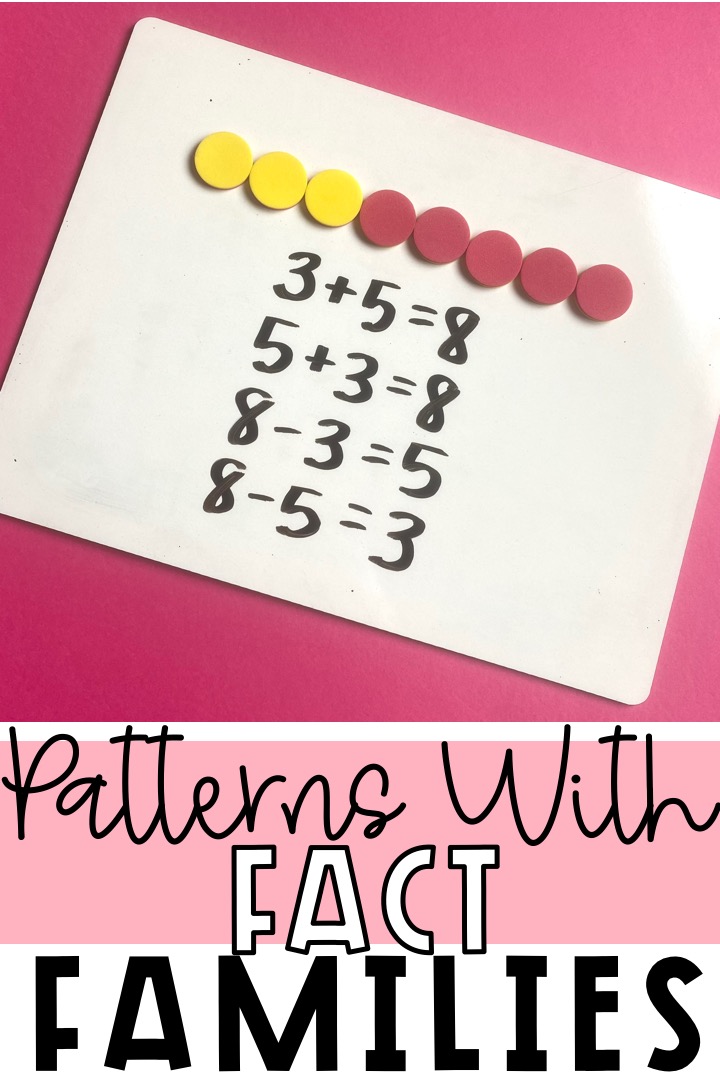
Get hands on when helping students learn the patterns with fact families.
Ask your students how much that makes? Write the equation 3+5=8.
Then make 5 red and 3 yellow. How many does that make? Write the equation 5+3=8.
Continue this with the subtraction equations. Then with other numbers and equations. Ask students what patterns they see.
Now that students see the patterns, give them lots of practice. ‘
We do this in my classroom by using Fact Family Triangles.
Fact Family Triangle Task Cards
I have triangles with the 3 related numbers. There are spaces for the 4 equations on each triangle. I print these out on different colors of card stock and laminate them. Students can write on them with dry erase markers. This is really great when I want to work with students one-on-one or if students are working in small groups as a center activity.
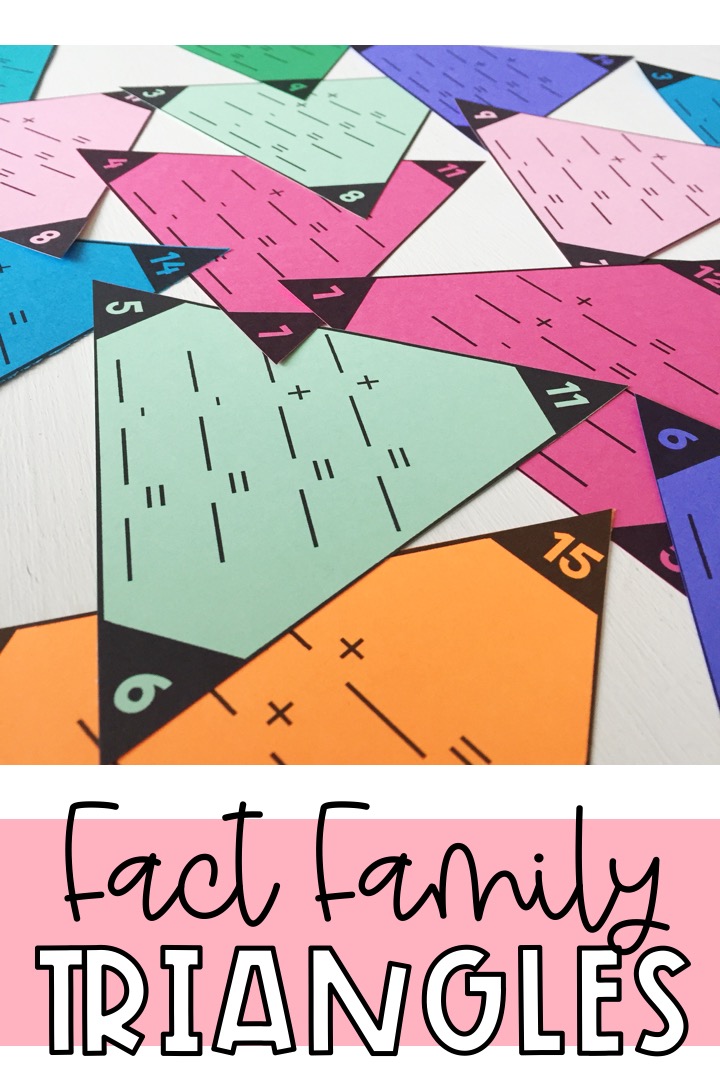
Students need lots of practice with fact families. Using fact families task cards is a great way to get students the practice with fact families they need.
If I want to do this activity whole group, I will print off a recording sheet and lay the card stock triangles around the room. Students go around the room writing each fact family equation as a scoot activity. I love how this gets students out of their seats and moving in the classroom.
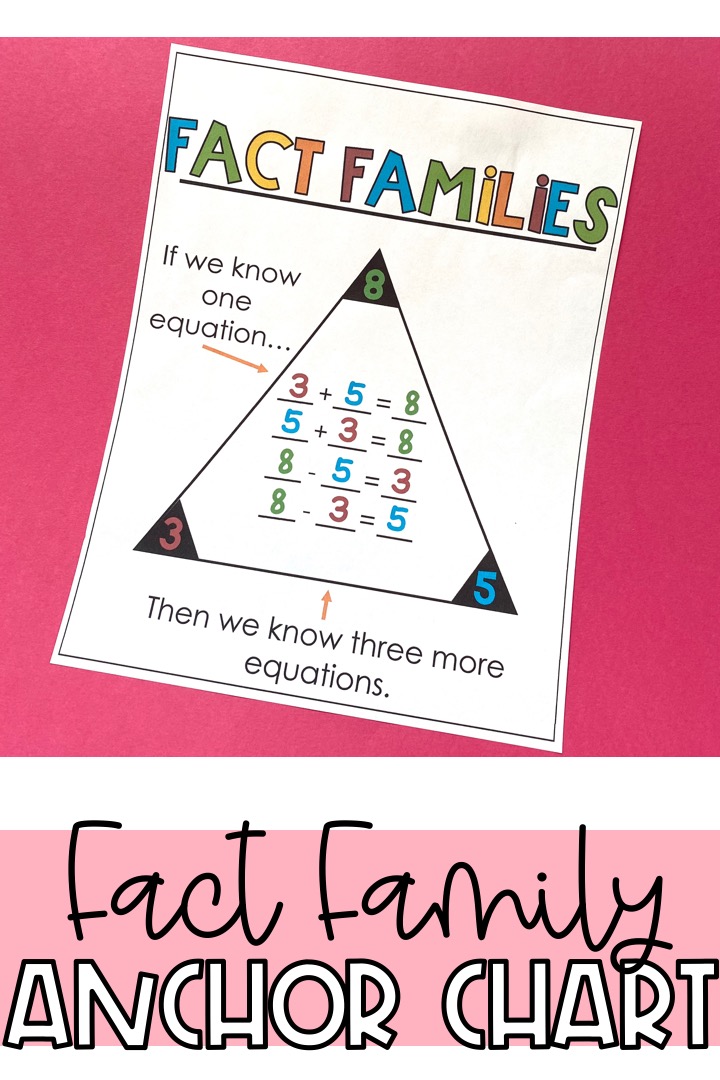
A fact families anchor chart is a great visual for student. Get this anchor chart as part of my fact family triangles resource.
I also hang up an anchor chart so students can remember how to do fact families. They can refer it to whenever they need.
Find these Fact Family Triangles I use in my classroom here.
Fact Family BOOM Cards
If you are teaching digitally right now, no worries! I’ve created a BOOM Cards set that helps students practice fact families. Find it here.
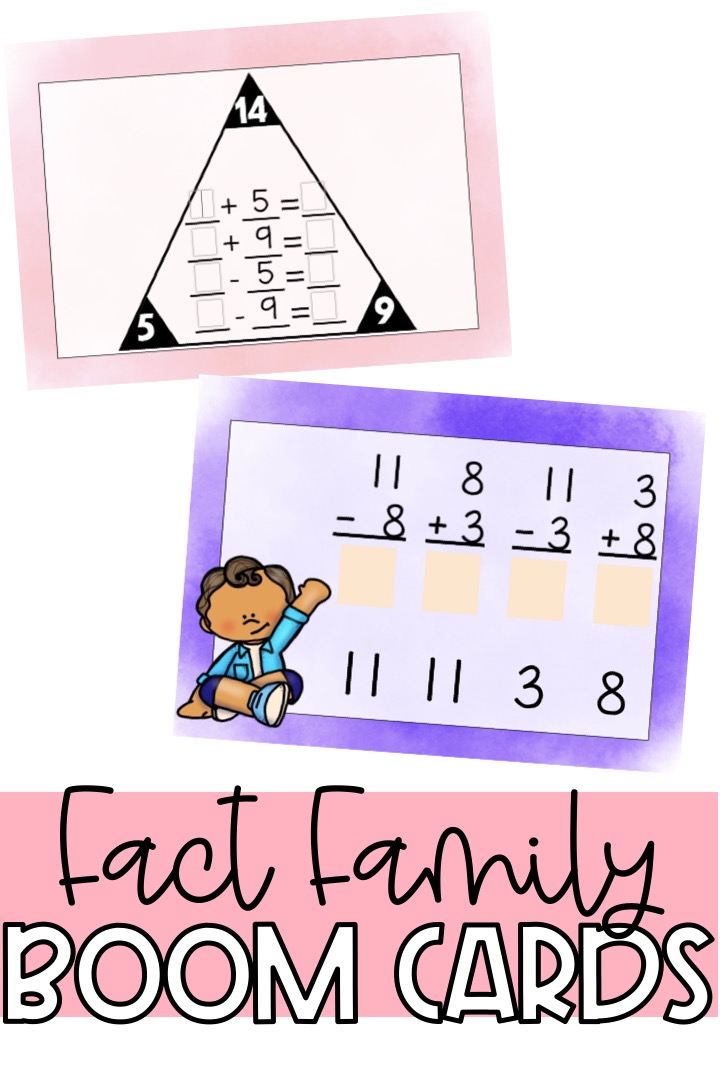
Even if you are teaching digitally, students can still get fact families practice.
You can also easily use these BOOM cards in the classroom as a small group activity if you have a few computers or I-pads in your classroom.
Fact Family Math Puzzles
My students also love to do math puzzles in our classroom. And I have fact family puzzles that are so engaging for students!
Students look at the center hexagon piece to know the numbers in the fact family. The number of dots altogether is the top number of the fact family. The number of gray dots is the number on the left. The number of black dots is the number on the right of the fact family.
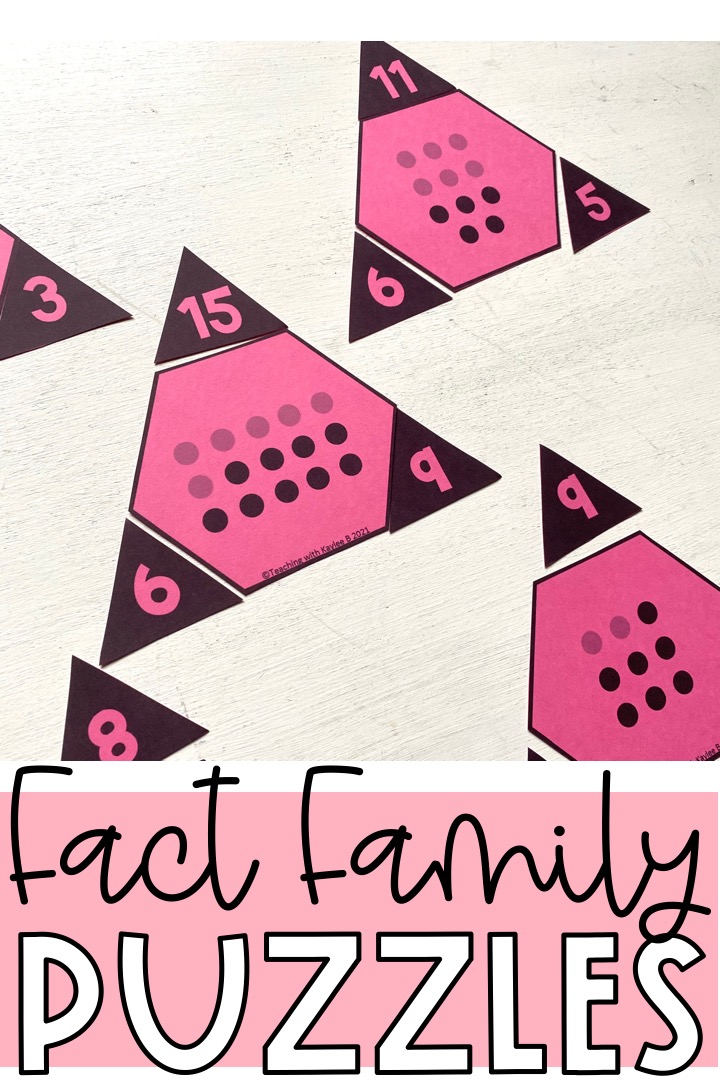
My students love these fact families puzzles. It’s a fun game that helps students see the patterns with fact families.
Then students use the recording sheet to write the four equations of the fact family. So students get so much practice and it is hands on for them!
There are so many puzzle options that it is easy to differentiate to students’ needs with this resource. If students need more help with facts 1-10, print out those puzzles. If students need more help with facts 1-20, print out those puzzles for that group of students.
Find these Fact Family Puzzles here.
I hope you have found this blog post helpful when teaching your students the importance of fact families. Looking for other math fact strategies to help your students? Read this blog post here: Math Fact Strategies that Work
For a step by step guide to getting your students to math fact fluency, download my free workbook designed for first and second grade teachers: The 7 Steps to Ensure Math Fact Fluency
